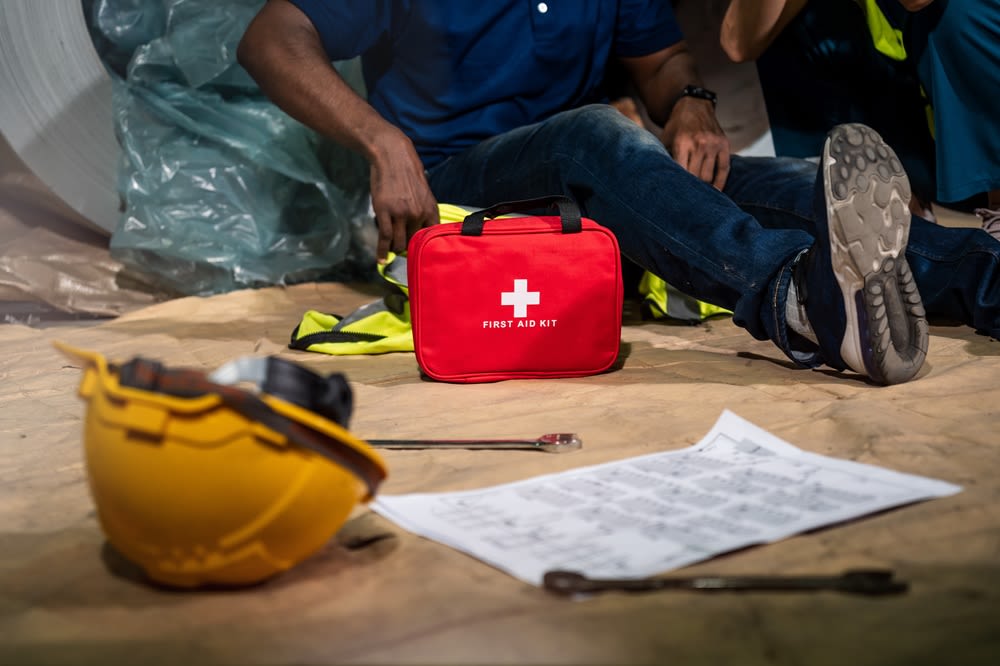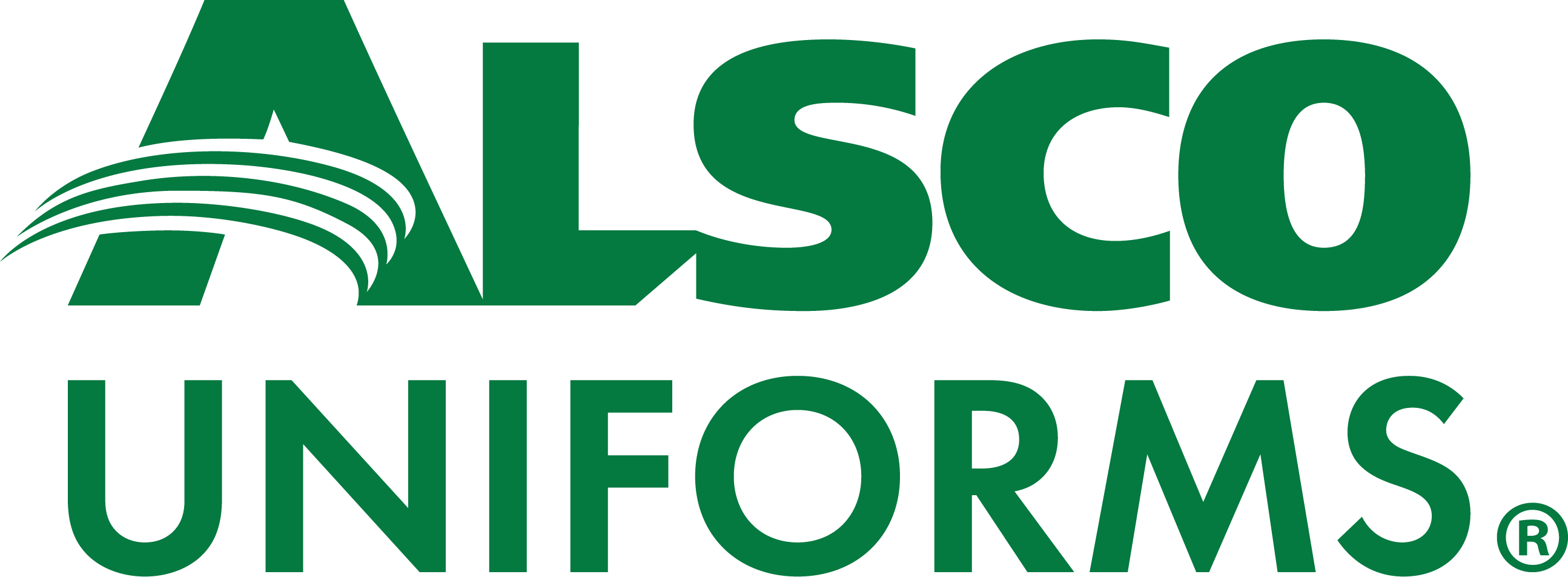
Workplace accidents can be a major obstacle for any business. Accidents cost businesses time and money. Multiple team members may need to take time to treat an injury or clean up, grinding your day-to-day processes to a standstill. The injured may require extensive time off to recover. In a best-case scenario, workers compensation insurance can pay for treatment. Unfortunately, many businesses fail to take the proper steps to prepare for and prevent common workplace accidents, opening them up to expensive lawsuits.
Every industry must deal with different hazards and follow specific safety standards and protocols. Heavy machinery, high temperatures, and electricity are a constant hazard in many industrial settings. Healthcare professionals may work with sharp objects and biohazardous materials. Food and beverage workers are constantly dealing with cuts and burns. Even desk jobs can pose a health risk through repeated motions and sedentary behavior.
Wherever you work, there are some injuries and accidents that are common across most industries. Fortunately, there are many ways to prevent these accidents and prepare for them if they do occur. Safety equipment like nonslip mats, first aid cabinets, automated external defibrillators (AEDs), and eyewash stations help, and a company like Alsco Uniforms can keep your safety products clean, stocked, and ready to use.
Keep reading to learn more about the five most common workplace accidents and the steps you can take to help avoid them.
Overexertion and Bodily Reaction
A common issue in all industries, overexertion and bodily reaction broadly covers two types of injuries: non-impact and repetitive motion. Non-impact injuries generally occur from lifting, pushing, and carrying heavy objects, while repetitive motion injuries occur in repetitive tasks like typing or working on an assembly line. According to the National Safety Council, these injuries make up 31% of workplace injuries.
Even sitting or standing at your job both present health risks. Sitting for long periods is linked to obesity, increased blood pressure, high blood sugar, and unhealthy cholesterol. Prolonged standing can lead to lower back and leg pain, cardiovascular problems, fatigue, and pregnancy related health issues.
How To Help
While overexertion and bodily reaction is an issue across all industries, there are also simple steps any business can take to alleviate these problems. The first step is to avoid fatigue and overexertion in the first place. Know the rules and regulations around overtime, monitor your employees’ well-being, and ensure shift schedules provide enough time for adequate sleep and recovery.
To avoid overexertion and bodily reaction injuries, you should also encourage your team to:
Utilize proper lifting techniques
Use aids like carts or hand trucks for heavy items
Get help when needed
Never overload a full load
Organize workstations to avoid bending, twisting, and awkward positions
Take short breaks during strenuous work
Stretch and exercise regularly
Take frequent breaks from static positions like sitting or standing
If employees are standing for long periods, consider using anti-fatigue mats. With a nonslip backing for extra protection, these padded mats provide cushioned support to reduce fatigue, improve circulation, and relieve joints and muscles. This small investment can improve productivity, reduce downtime from injuries, prevent absenteeism and turnover, and boost employee morale.
A managed floor mat rental program like Alsco Uniforms can keep your business supplied with anti-fatigue mats, so you can improve workplace safety without any hassle.
Slips, Trips, and Falls
An already common injury outside the workplace, slip and fall accidents are around 27.5% of workplace accidents. Employees may be able to quickly walk off some slips and falls, but they can often lead to painful sprains, strains, and tears that require time-off to treat. Slips and falls can also open businesses up to larger liability. Wet floors, tangled cords, or worn-out mats could turn a simple slip into a major lawsuit.
How To Help
Slips, trips, and falls are a fact of life, but there are ways to make your workplace safer and to reduce your liability. Here’s where to start:
Remove obstacles – Debris, cords, and clutter can easily cause falls. Walk your worksite often and remove anything that could be a hazard. If you must string cords or lines across walkways, do so temporarily, tape them down, and make them visible.
Use good flooring – If you’re opening a new location, make sure you consult with the contractor to ensure your flooring is easy to clean and less likely to cause falls.
Clean up spills – Make sure your staff has access to cleaning materials like mops and rags to eliminate spills ASAP.
Use signage – If you can’t fix a problem right away, use appropriate signage to alert people to the issue, like a wet floor sign.
Install protective gear – If you have hazards like manholes or walkways, consider installing railings, hole covers, or toe boards to stay safe.
Train your workers – Hold regular training on workplace safety. Make sure your workers are actively keeping floors clear and clean.
Properly maintained floor mats help reduce the risk of slips and falls. Scraper and wiper floor mats near the entrance give customers and staff a chance to get excess snow, water, and mud off their shoes, helping your facility stay clean and dry. Mats with nonslip backing can prevent slips on smooth flooring.
While floor mats can help prevent debris or water from accumulating on your floors, effective mops, towels, and cleaning chemicals can help you quickly clean messes when they do occur. Mops should be regularly laundered to ensure hygiene, and cleaning chemicals must be properly mixed for the best results.
If you need floor mats, mops, or cleaning chemicals for your business, consider a managed rental program like Alsco Uniforms. We’ll pick up your dirty mats and mops, drop off clean mops and mats, replenish your cleaning chemicals, and launder and maintain your inventory so it always meets your needs.
Contact with Objects and Equipment
Many workplaces are a dynamic environment with a lot of moving parts, leading to lots of potential injuries. Moving objects and heavy machinery can easily strike employees, leading to serious injuries that can require downtime and expensive care. These injuries make up 25.8% of workplace accidents.
How To Help
Keep your workplace well-lit and ensure moving objects and machinery are clearly visible. Regularly train your staff on proper safety protocols around the workplace. Additionally, proper uniforms and PPE can make a big difference. In an industrial facility, for example, safety glasses, hard hats, good boots, and high visibility workwear can drastically reduce the risk of injuries from contact with objects and equipment. In an environment with lots of moving parts, the moving parts should be visible, but so should your team members.
If you want regular deliveries of freshly laundered high visibility clothing, consider the uniform rental program from Alsco Uniforms.
Transportation Incidents
Commercial transportation equipment is often large, hard to maneuver, and requires specific training and licensing. While this equipment is not involved in every workplace, transportation accidents still make up 5.6% of all workplace injuries. Vehicles and transportation equipment can easily cause serious injuries, and workers both on the ground and behind the wheel need to be aware at all times.
How To Help
Much like accidents caused by contact with objects or equipment, you can reduce transportation incidents with regular training, making equipment visibly and audibly noticeable, and high visibility clothing. High visibility clothing makes it difficult to miss people on the ground, so people operating machinery or vehicles are less likely to hit them.
Fire and Explosions
Fires and explosions are generally a big hazard in specific work environments, like commercial kitchens or industrial facilities. While they only cause 3% of occupational injuries, they cause the most fatalities of all industrial accidents. Fires and explosions can be devastating incidents, and often require shutting down an entire facility while they are put out.
How To Help
As always, training is vital. Staff should know protocols for working with heat, flame, and electricity. Your workplace should have clear rules around flammable and explosive materials, and those materials should be properly labeled and stored at all times. Fire extinguishers, fire alarms, and maps of evacuation routes should be visible and easily accessible, and staff should be regularly drilled on fire safety and evacuation.
Proper equipment can reduce the risk of serious injury or death from fires and explosions. Fire-resistant clothing can protect team members from flash fires or electrical arcs. When selecting flame resistant clothing, choose fabrics that naturally resist burning to stay safe after repeated laundering. If you work in an environment where flames or explosions are a common hazard, consider investing in first aid kits that include burn treatment modules for fast care.
Alsco Uniforms offers a variety of products to help protect your team from fire and explosions, including fire resistant clothing and wall-mounted first aid cabinets. We’ll keep your uniforms clean and ready to wear, and we’ll make sure your first aid kit has everything you need to treat workplace injuries.
Stay Prepared With A Safety Station
Accidents, injuries, and illnesses are a fact of life. When they happen, fully stocked safety stations that are clearly marked and easily accessible can literally mean the difference between life and death.
What should my safety station include?
First Aid Cabinet – A fully stocked first aid cabinet is the first line of defense in an emergency, and they are often required by law.
Automated External Defibrillator (AED) - An AED provides step-by-step instructions for restoring a regular heart rhythm during a cardiac event.
Eyewash Station – An eyewash station helps people quickly wash away debris, chemicals, and hazardous materials from their eyes.
Managing a safety station can be a hassle. You must keep track of inventory, replace expired items, and ensure everything meets industry standards. That’s where Alsco Uniforms can help. Our managed health and safety rental program ensures that you have what you need, when you need it. We’ll keep your First Aid cabinet stocked, maintain and replace equipment as needed, and launder your nonslip floor mats, high visibility clothing, and fire-resistant uniforms, so you don’t have to worry about a thing.
Contact us today to learn more.
